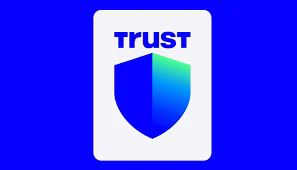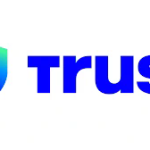How to Connect Wallet to Decentralized Apps: A Comprehensive Guide
# Introduction
Decentralized applications (DApps) have revolutionized the way users interact with blockchain technology. Unlike traditional applications that rely on centralized servers, DApps operate on peer-to-peer networks, providing benefits such as enhanced security, transparency, and resistance to censorship. One of the essential components of engaging with DApps is the ability to connect a digital wallet. This guide delves deep into the mechanisms of connecting wallets to DApps, exploring necessary steps, various wallet types, and the implications of this technology on the broader digital landscape.
# Understanding Digital Wallets
Digital wallets, also known as cryptocurrency wallets, are software programs that allow users to store and manage their digital assets, such as cryptocurrencies and tokens. They also facilitate transactions on various blockchain networks. Wallets can be categorized into two main types:
1. **Hot Wallets**: These wallets are connected to the internet, making them convenient for everyday transactions. They are found in the form of desktop applications, mobile apps, and web-based wallets. However, hot wallets are more vulnerable to hacks and phishing attacks.
2. **Cold Wallets**: Cold wallets are offline storage solutions that provide higher security. Examples include hardware wallets and paper wallets. While they are less convenient for frequent transactions, they are ideal for storing large amounts of cryptocurrency securely.
### Wallet Address
Every wallet has a unique address, a string of alphanumeric characters that acts like an account number. Users can share their wallet address with others to receive cryptocurrencies. This address is derived from the user’s public key, while the private key is used to authorize transactions.
# What Are Decentralized Applications (DApps)?
DApps are software applications that run on a peer-to-peer network, typically utilizing blockchain technology. They operate under smart contracts, self-executing contracts with terms directly written into code. DApps leverage decentralized storage and protocols to eliminate the need for a central authority, allowing for greater user autonomy and security.
### Characteristics of DApps
– **Decentralization**: They operate on a distributed network rather than being hosted on a single server.
– **Open Source**: Most DApps are open-source, allowing for transparency and community collaboration.
– **Incentivization**: DApps often integrate cryptocurrency to reward users for their contributions and engagement.
# Why Connect a Wallet to DApps?
Connecting a wallet to a DApp is crucial for various reasons:
1. **Access to Blockchain Features**: Many DApps require interaction with the blockchain, such as executing transactions, creating smart contracts, or voting in decentralized governance systems. Wallets enable these interactions.
2. **User Authentication**: Digital wallets serve as a form of identification, eliminating the need for traditional login methods. Users can sign transactions with their private keys.
3. **Managing Assets**: Connecting a wallet allows users to easily manage digital assets within the DApp, facilitating seamless interactions.
4. **Enhanced Security**: Wallets provide a secure way to manage and execute transactions without relying on a central authority. Users retain control over their private keys and, consequently, their funds.
# Steps to Connect a Wallet to a DApp
Connecting a wallet to a DApp typically involves a few straightforward steps. While the processes may vary slightly depending on the wallet and DApp, the following outlines the general approach.
### Step 1: Choose a Compatible Wallet
First and foremost, you need a wallet compatible with the blockchain network where the DApp operates. Here are some common wallets associated with popular blockchain platforms:
– **Ethereum**: MetaMask, Trust Wallet, and Coinbase Wallet.

– **Binance Smart Chain**: Trust Wallet and MetaMask (configured for BSC).
– **Polkadot**: Polkadot.js and Parity Signer.
### Step 2: Create and Fund Your Wallet
If you don’t already have a wallet, download the wallet application or create an account on a wallet platform. Make sure to generate a new wallet address and securely store your private key or seed phrase.
1. **Creating a Wallet**: Follow the hardening steps recommended by the wallet provider to ensure your wallet’s security.
2. **Funding Your Wallet**: Purchase cryptocurrency from exchanges and transfer the assets to your wallet address.
### Step 3: Open the DApp
Visit the DApp’s website using a suitable browser that supports wallet extensions or apps (such as Chrome or Firefox for MetaMask). Ensure you are accessing the legitimate DApp to avoid phishing scams.
### Step 4: Connect Your Wallet
Most DApps feature a “Connect Wallet” button, typically located in the upper right corner of the interface. Click this button, and you will see options for various wallet types.
#### If Using Wallet Extensions (e.g., MetaMask):
– Click on the wallet icon you wish to use (e.g., MetaMask).
– A pop-up will appear, prompting you to select your account and confirm the connection.
– Once confirmed, the DApp will now display your wallet address and available balance.
#### If Using a Mobile Wallet:
– Choose the option to connect via a QR code if available.
– Use your wallet app to scan the QR code displayed on the DApp’s website.
– Confirm the connection request within the wallet app.
### Step 5: Interact with the DApp
After your wallet is connected, you can engage with the DApp’s features—this may include trading tokens, supplying liquidity, gaming, or participating in governance. Transactions may require wallet confirmations, where you will need to approve the action and potentially pay a gas fee, particularly with Ethereum-based DApps.
### Step 6: Disconnecting Your Wallet
When you’re finished using the DApp, it’s advisable to disconnect your wallet to enhance security. This can usually be done by clicking on your wallet address or an appropriate option in the DApp interface and selecting “Disconnect.”
# Understanding the Technical Framework
For a deeper comprehension, it helps to understand the underlying technologies and protocols that enable wallet-to-DApp connections.
### Smart Contracts
Smart contracts are the backbone of DApps. Written in code, these self-executing contracts automatically enforce agreements when predetermined conditions are met. When you connect your wallet to a DApp, your interactions typically trigger functions within smart contracts.
### Wallet Integration Protocols
Wallets and DApps utilize various protocols and libraries for integration:
– **Web3.js**: A JavaScript library allowing interaction with the Ethereum blockchain. It enables DApps to communicate with the wallet.
– **EIP-1193**: A standard interface for connecting wallets to DApps that allows DApps to request account access and send transaction requests securely.
### Transaction Fees
When using DApps, you may encounter transaction fees (gas fees). These are payments made to miners who process and validate transactions on the blockchain. The amount can vary based on network congestion, and it’s essential to be aware of these costs when engaging in transactions.
# Security Best Practices
Connecting wallets to DApps requires awareness of potential risks. Here are key security best practices:
1. **Use Reputable Wallets**: Always choose well-known wallets with a track record of security.
2. **Enable Two-Factor Authentication**: If available, use two-factor authentication to provide an extra layer of security.

3. **Beware of Phishing Scams**: Ensure you are using the official DApp website and not a phishing site designed to capture your private keys.
4. **Limit Wallet Connection Duration**: Disconnect your wallet from DApps when not in use. This minimizes the risk of unauthorized access.
5. **Secure Your Private Key**: Never share your private key with anyone. It provides full access to your wallet and assets.
# Future Implications
As blockchain technology continues to evolve, the connection between wallets and DApps will grow increasingly sophisticated. Innovations such as layer two solutions and cross-chain compatibility will enhance scalability and accessibility in decentralized applications.
Furthermore, the expansion of regulatory frameworks and the integration of decentralized identity solutions may change how wallets interact with DApps. This can lead to greater security, enhanced privacy, and broader acceptance of DApps among mainstream users.
# Conclusion
Connecting a digital wallet to a decentralized application is a fundamental step in the realm of blockchain interaction. By understanding the processes, security implications, and underlying technologies, users can engage effectively with DApps, harnessing the power of decentralized ecosystems. The convergence of wallets and decentralized applications marks a significant advancement in technology, emphasizing user autonomy, security, and trust in the digital age. As the landscape of blockchain technology continues to evolve, users who are informed and diligent will be best positioned to navigate this exciting frontier.


